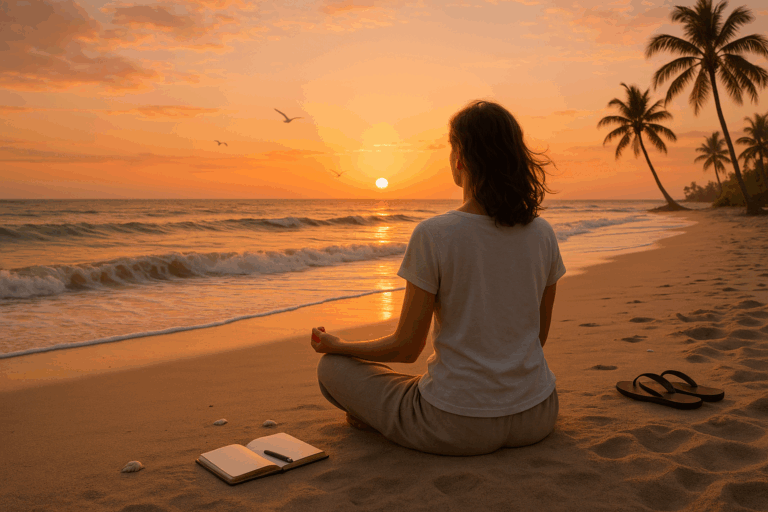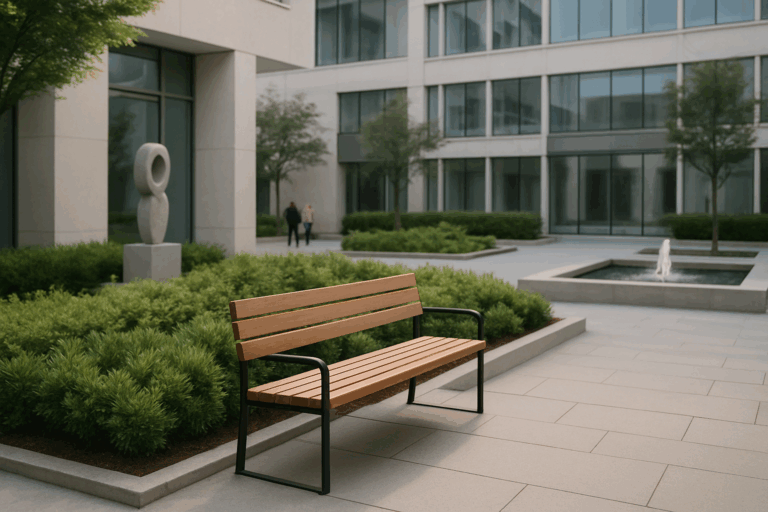This sensory overload can lead to stress and decision fatigue, impairing our ability to make optimal decisions. Yet, there is a solution right at our fingertips – the art of minimalism. And this is not just about decluttering your physical space. It extends to simplifying your routines and making your life more manageable, no matter where in the world you are.
Mastering the art of minimalism is a journey. It involves unlearning many of the habits ingrained in our modern culture, which is marked by excess and overconsumption. However, once mastered, it can provide a profound sense of clarity, peace, and focus. This is the core theme of this article, “Minimalist Mastery: Simplifying Your Routine Anywhere in the World”.
This article will guide you through the process of simplifying your routine through a minimalist lens. We will discuss the benefits of adopting a minimalist lifestyle, the steps to transition, and how to maintain this approach in different locations around the world. This is not a quick fix solution, but a lifestyle choice that requires conscious effort and determination. But once embraced, it can significantly enhance the quality of your life.
In this extensive guide, you will get an in-depth understanding of minimalism, beginning with its origin and philosophy. We will delve into the psychological benefits of simplifying your routine, which include reduced decision fatigue, lower stress levels, and increased productivity. We will also look at how simplification can help enhance creativity and personal growth.
Next, we will walk you through a step-by-step process to transition towards a minimalist routine. This includes practical tips on decluttering your physical and digital spaces, redefining your priorities, simplifying your tasks, and creating a minimalist workspace. We will also touch upon how to handle the challenges that come up during this transition process.
Adopting a minimalist lifestyle is not confined to a particular geographical location. You can simplify your routine whether you live in a bustling city, a peaceful countryside, or are constantly on the move. We will provide you with strategies to maintain a minimalist lifestyle in different environments and across various cultures.
By the end of this article, you will have the tools and knowledge to simplify your routine and live a more focused, fulfilling life, no matter where in the world you are. While the process may seem daunting at first, remember that every journey begins with a single step. And we are here to guide you every step of the way.
So, let’s embark on this journey towards minimalist mastery, simplifying your routine and embracing a life of less that gives you more.
But before we dive in, let’s clarify what minimalism is not. It’s not about depriving yourself of pleasures or living an austere life. Rather, it’s about making intentional choices – choosing quality over quantity, experiences over possessions, and clarity over clutter. So, if you’re ready to break free from the overwhelm and embrace simplicity, read on.
Embracing the Minimalist Lifestyle
The minimalist lifestyle is a conscious decision to live with less, to strip away the unnecessary, and to focus on what truly matters. It is about identifying the essential and eliminating the rest. It is a philosophy that applies not just to possessions but also to routines and commitments. Living a minimalist lifestyle is not about deprivation; instead, it’s about removing distractions so you can focus on what’s important. If you’re interested in pursuing this lifestyle, the video “Minimalism: A Documentary About the Important Things” by The Minimalists is a must-watch.
Even though minimalist living may sound simple, it can be challenging to implement, especially in a world that constantly pushes us to want more. However, with the right approach, it is possible to simplify your routine anywhere in the world. Here is a step-by-step guide to achieving minimalist mastery, which can be applied whether you’re at home, in the office, or traveling.
Minimalism is not a one-size-fits-all approach, and what works for one person may not work for another. It is important to customize your minimalist lifestyle to your needs and preferences. This way, you will be more likely to stick with it and reap its benefits.
Steps to Simplifying Your Routine
The first step to simplifying your routine is to understand your current lifestyle. This requires honest self-reflection about your habits, commitments, and possessions. Start by listing all your daily activities, and examine each one closely. Which ones bring you joy? Which ones are necessary? Which ones can be eliminated or reduced? Reflecting on these questions will help you identify what’s essential and what’s not.
After you have a clear understanding of your current lifestyle, you can start decluttering. This involves removing unnecessary items from your home, reducing your commitments, and simplifying your daily routine. When decluttering, it’s crucial to be ruthless. If an item or activity doesn’t serve a purpose or bring you joy, it’s probably not essential.
Once you’ve decluttered, it’s time to organize your remaining possessions and commitments. This can be achieved through various methods, such as using storage solutions, creating a schedule, or employing productivity tools. The key is to make your routine as simple and efficient as possible.
Minimalist Living: Comparison of Routines
| Traditional Routine | Minimalist Routine | |
|---|---|---|
| Morning | Wake up, check phone, shower, prepare and eat breakfast, get dressed, commute to work. | Wake up, meditate, shower, prepare and eat a simple breakfast, get dressed, start work (no commute if working from home). |
| Work | Work non-stop, attend unnecessary meetings, eat lunch at desk, feel overwhelmed. | Work in focused bursts, attend only essential meetings, take a proper lunch break, feel productive and calm. |
| Evening | Commute home, prepare and eat dinner, watch TV, go to bed late. | Finish work, prepare and eat a simple dinner, read or pursue a hobby, go to bed early. |
As you can see from the table above, a minimalist routine is not only simpler but also more purposeful and fulfilling. It emphasizes quality over quantity, and it values peace and balance over chaos and busyness. Check out the video “A Day in the Life of a Minimalist” by Matt D’Avella for a real-life example.
Benefits of a Minimalist Lifestyle
Adopting a minimalist lifestyle has many benefits. For one, it reduces stress by eliminating unnecessary tasks and possessions. It also saves time, as you spend less time managing your stuff and more time doing what you love. Additionally, minimalism can save you money, as you buy fewer items and make more mindful purchases. Lastly, a minimalist lifestyle is environmentally friendly, as it reduces waste and promotes sustainable practices.
However, it’s important to note that minimalism is a journey, not a destination. It’s not about achieving perfection but rather about making continual progress. As you simplify your routine, you’ll likely encounter challenges and resistance, both from yourself and others. It’s important to stay committed and remember why you chose this path in the first place.
To learn more about the benefits of minimalism, I recommend watching the video “The Benefits of Minimalism” by The Minimalists. This video offers a detailed and insightful look into the advantages of adopting a minimalist lifestyle.
Final Thoughts
Embracing a minimalist lifestyle requires a significant shift in mindset and habits. It involves questioning societal norms, confronting personal insecurities, and resisting consumerist temptations. However, the rewards are worth the effort. A minimalist lifestyle can bring peace, freedom, and fulfillment. It can help you live a more intentional and meaningful life, regardless of where you are in the world.
Remember, minimalism is not about deprivation but about making room for what matters most. It’s not about how little you have but about how much you enjoy what you have. So, don’t be afraid to take the first step towards minimalist mastery. Your journey towards a simpler and happier life starts now.
For a deeper dive into minimalism, I highly recommend watching the video “The Art of Letting Go” by The Minimalists. This video provides a thorough and inspiring exploration of minimalism, with practical tips and insights to help you on your journey.
Recommended Resources
- Video: “Minimalism: A Documentary About the Important Things” by The Minimalists
- Video: “A Day in the Life of a Minimalist” by Matt D’Avella
- Video: “The Benefits of Minimalism” by The Minimalists
- Video: “The Art of Letting Go” by The Minimalists
In conclusion, minimalist mastery is a rewarding journey that can transform your life in profound ways. It all begins with a decision to live with less so you can experience more. So, are you ready to simplify your routine anywhere in the world?

Conclusion
In conclusion, the extensive points touched upon in this article underpin the magnitude of the role played by technological advancements in today’s fast-paced world. As delineated, the adoption and effective application of these technological tools can be a game-changer for businesses and individuals alike. Therefore, the importance of a firm grasp of these technologies cannot be overstated.
This article underscored the foundational knowledge of Information Technology (IT) and Software Engineering, providing you with a comprehensive understanding of their crucial role in our digital age. We delved into different components of IT, including hardware, software, networks, and databases, and how they come together to form a cohesive system. The article also explored various software engineering principles and methodologies, their applications, and their impact on delivering high-quality software products.
We also walked you through the necessity of data security in the digital era, enlightening you on how cybersecurity measures play an integral role in safeguarding sensitive information. Furthermore, the significance of emerging technologies such as Artificial Intelligence, Machine Learning, and Cloud Computing, which are redefining the technology landscape, were highlighted.
Moreover, we laid emphasis on the vital aspect of technical communication and documentation, elucidating how it enhances understanding and collaboration in a technical environment. The process of transforming complex technical concepts into understandable language was also discussed in detail, enhancing your knowledge on this crucial skill.
In retrospect, this article has offered an in-depth view into the fascinating world of technology, encompassing the domains of IT and software engineering. My hope is that this enriching knowledge will inspire you to dig deeper, learn more, and potentially apply these concepts in your respective fields.
You are encouraged to leave comments below, sharing your thoughts, questions, or experiences related to the subject matter. Your input can contribute to a broader discussion and help others in their understanding of these complex concepts.
Moreover, feel free to share this article on your social media platforms or with your peers who might find this information beneficial. By doing so, you will be playing a part in disseminating valuable knowledge and contributing to a tech-savvy community.
Lastly, for those interested in further research, you can access more information on IT and Software Engineering through active links such as [Wikipedia](https://en.wikipedia.org/wiki/Information_technology) and [IEEE](https://www.computer.org/technical-committees/software-engineering/).
Remember, the world of technology is vast and ever-evolving. Therefore, continuous learning and adaptation are essential. Stay curious, keep exploring, and keep innovating. The future of technology is in your hands.
References:
[1] “Information Technology.” Wikipedia, [Link](https://en.wikipedia.org/wiki/Information_technology)
[2] “Software Engineering.” IEEE Computer Society, [Link](https://www.computer.org/technical-committees/software-engineering/)
[3] “Understanding Cybersecurity.” Cybersecurity & Infrastructure Security Agency, [Link](https://www.cisa.gov/cybersecurity)
[4] “Artificial Intelligence – What it is and why it matters.” SAS, [Link](https://www.sas.com/en_us/insights/analytics/what-is-artificial-intelligence.html)
[5] “What is Cloud Computing? A Beginner’s Guide.” Microsoft Azure, [Link](https://azure.microsoft.com/en-us/overview/what-is-cloud-computing/)
[6] “What is Technical Writing?” TechWhirl, [Link](https://techwhirl.com/what-is-technical-writing/)



